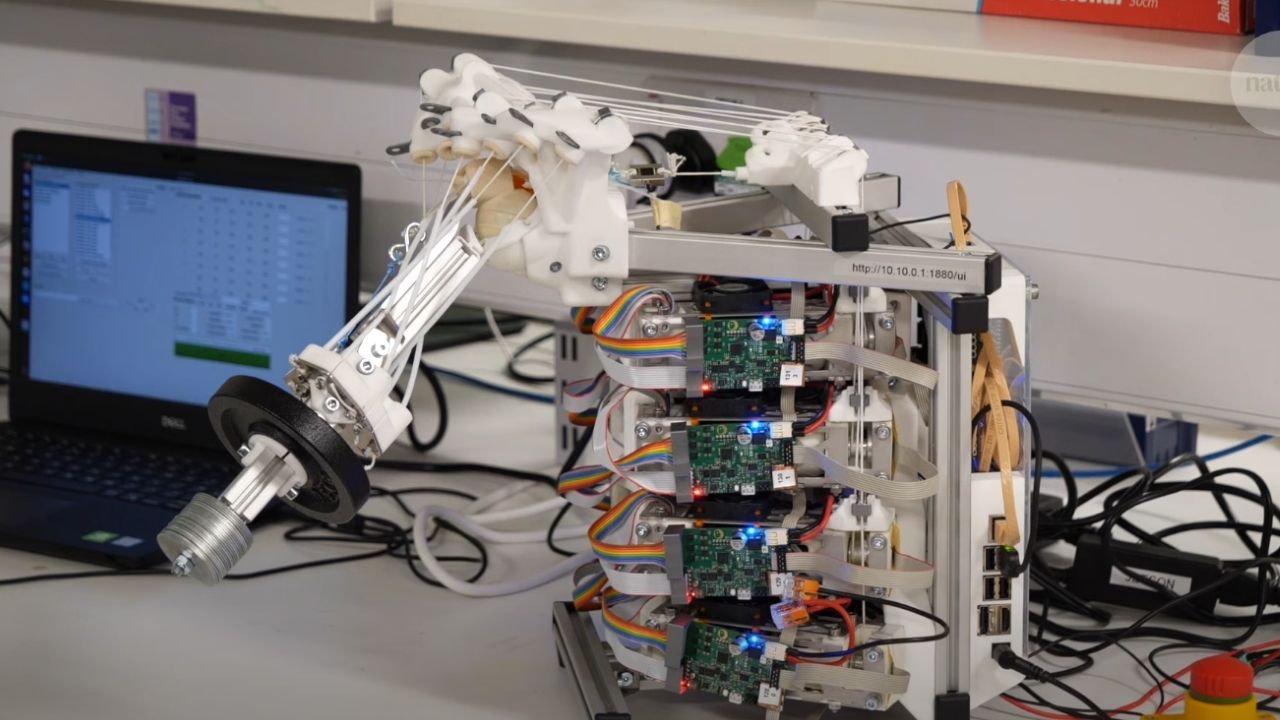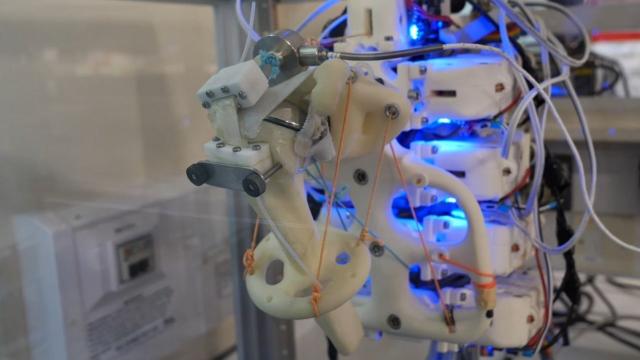Researchers at the University of Oxford and robotics company Devanthro have grown cells on a robotic skeleton. Why? Because they could.
As originally reported by The Verge, this new method of tissue engineering is currently in the “proof of concept” stage. Growing human cells in medicine is still a considerably new field and there’s a lot that we still have to uncover about it before we start to apply lab-grown human cells to patients.
In thinking about the situations cells grow in, on bodies that are constantly moving, the University of Oxford thought that it would be best to recreate that scenario: where cells are required to bend, contort, flex and move around constantly.
This brings us to the robotic shoulder, set up to mimic the conditions of the human body. In the robotic arm below, human cells have been arranged to grow, able to adapt to the constantly moving conditions of a human-like arm.
“We’re still far away from a fully functional tendon tissue graft, and we think that partially this is because we are not providing the same complexity of mechanical stresses around those cells, said Pierre Mouthy, a member of The Botnar Institute at the University of Oxford.
This led Mouthy to begin developing this cell growth system.
How it works is a bit more complex than a petri dish, where some cells can happily grow without much hassle. The tendon cells are grown on stretchy, plastic scaffolds, with fluid passing through them (this fluid provides the cells with oxygen and nutrients). It’s designed so that the cell container (the plastic scaffolds) can flex around like a shoulder, giving the cells an environment in which they need to adapt to moving conditions.
Constant relaxing and stretching has stimulated the cells to grow properly so far, although it’s still a far cry from what happens to our cells when we exercise them.
To power the cell growth, a “Robody” robot from Devanthro was used. It’s designed to be a human-like robot avatar and made a perfect skeleton for the cells to grow in.
“What makes them special is that they have muscles and tendons as we humans do,” said Rafael Hostettler from Devanthro.

With tendons and muscles, the Robody is kind of the perfect candidate for in-action cell growth. The mechanics are already there, all the team needed to do was apply the cell-filled plastic scaffolds to the robot.
“If it works, one-day human patients could be treated with tissue grafts grown in robots,” The video voiceover says.
“[It could be used for] improving rehabilitation exercises, by looking at how the cells are being affected by a particular exercise, or it could also be used in translational research to screen through biomaterials to ensure that they are mechanically suitable for humans,” added Pierre.
“Now we’ve demonstrated that it is feasible to use this approach, and I think the fun only starts now because now that we’ve demonstrated that it’s feasible use those humanoid robots, we can explore the different possibilities that they can do and look into whether it can really help to improve the quality of the grafts by providing these more physiologically relevant mechanical stresses.”
Anyway, this skeleton cell study was a proof of concept. There are no plans for it to go into anything in the future, and as The Verge reported, this was just showing feasibility.
“Future work should investigate the effect of various loading regimes, scaffold materials, cell types and operating parameters. Possible long-term benefits from a humanoid bioreactor-based strategy include the production of functional tissue grafts for patients, the creation of an improved in vitro culture model for preclinical work and the opportunity to support the development of advanced robotic systems,” the paper concludes.
You can read the research paper on this in Communications Engineering.
